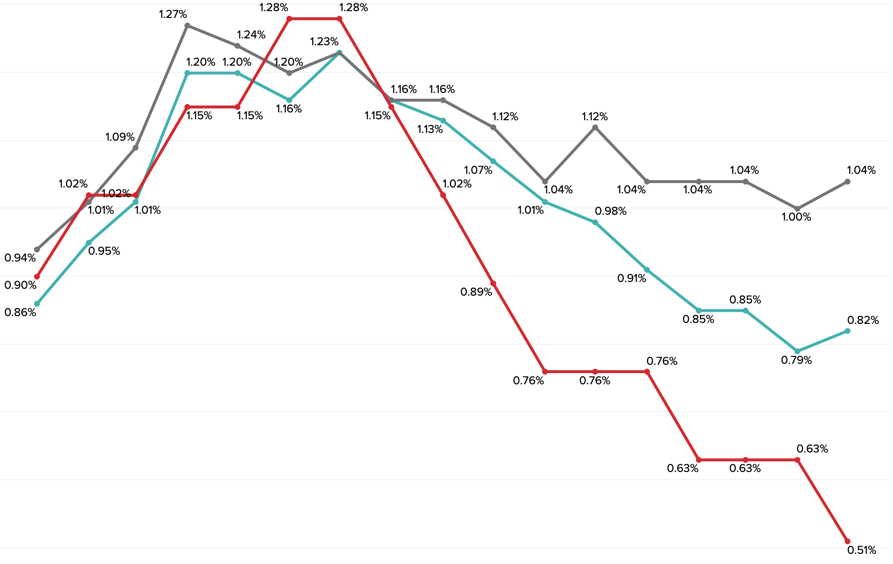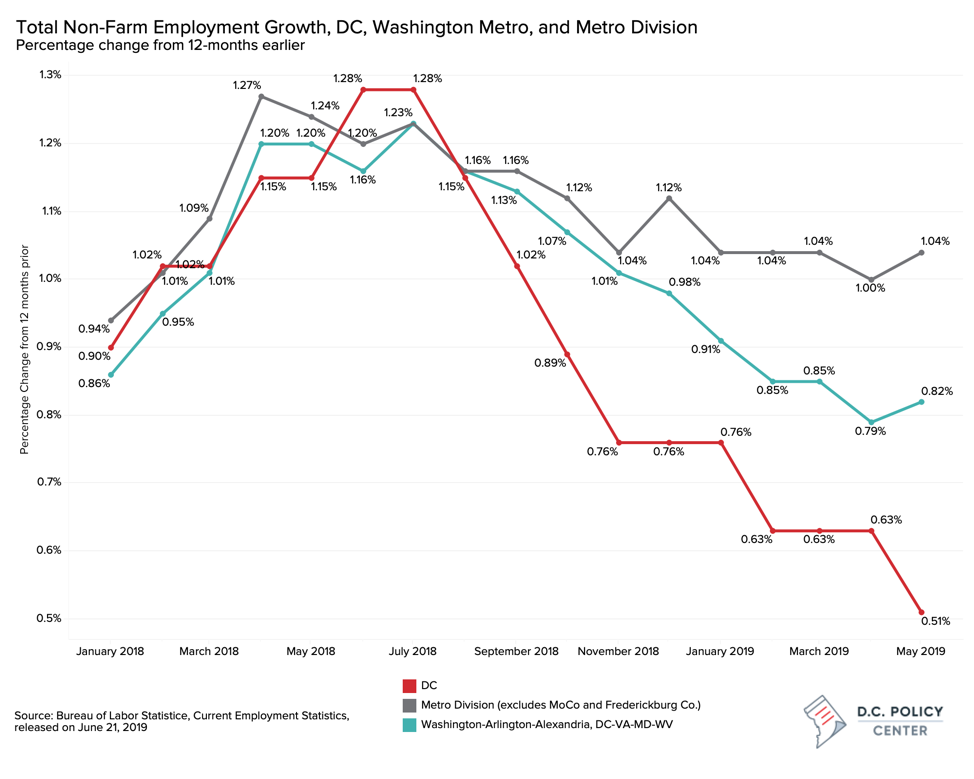

In contrast to administrative data, new survey data show that D.C. employment is underperforming compared to the rest of the metropolitan region.
Last week, we published an analysis of employment trends in the region based on administrative data firms file with the Unemployment Insurance program, known as the Quarterly Survey of Employment and Wages (QSEW). This analysis showed that in 2018, the District outperformed the surrounding jurisdictions in employment.
On June 21, the Bureau of Labor Statistics released the monthly employment numbers for May 2019 based on the Current Employment Statistics (CES). CES data—the first information on employment to be released (about three weeks after the end of the month)—are based on a survey and subject to revisions. Some of these revisions are large enough to reverse the observed trends. But CES are the first data released on employment trends and this data tell us that District employment growth is now underperforming the regional growth.[1]
During the 12 months that ended in May 2019, D.C. employment grew at 0.51 percent compared to 0.82 percent in the Washington metro area. CES data suggest that the pace of employment growth declined rapidly between May of 2018 and 2019. In May of 2018, D.C. outperformed the region by an annualized growth rate of 1.28 percent.
Watch for a deep dive in the June 21 figures early next week.

